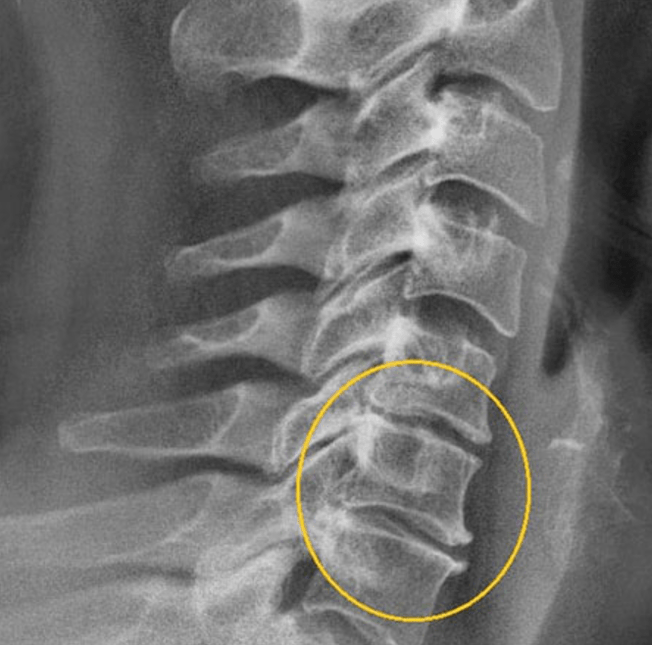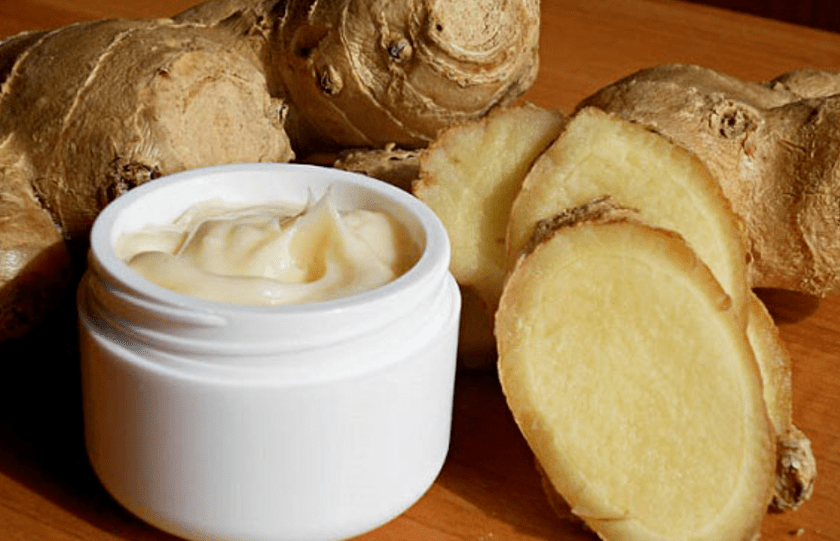A change in the cervical spine, the destruction of intervertebral disks, a change (hernia), (hernia), (degenerative), (tear), (tear)) is a chronic, slowly progressive lesion.

Subsequent weight loss and inflammation of the nerves and their results) and joins the clinical signs of osteocondrosis) of osteocondrosis. With cervical osteocondrosis, these are headaches, dizziness, redirect, nausea, nausea, sharp pressure drops. Osteochondrosis, a general pathology, in 90% of people aged 45 to 45 years old (regardless of the sex), for the office staff who lead to sedentary life. The lesion of the cervical region is often diagnosed as a pawnshop osteocondrosis. This is due to extreme mobility of his neck and the weakness of the muscles around the spine in this area.
The intervertebral disk (abbreviated MPD) is a watery pulp core and an elastic, powerful fibrous bark that surrounds it in the center. The bodies of neighboring vertebrae adjacent to him and below. Diffusion (and water secretion of water) in the unfaithful disk (and water secretion) (and water secretion) of the medium disk (and water secretion), entering the molecules into disk texture and back filtering). The gradual aging of the intervertebral disk is completely stopped in the obtaining the necessary items and provocative factors (pressure, load). The intense piece of Fibrola membrane is covered with cracks, loses its elasticity, and the pulp core dries in the center (losing water). This leads to the progress of cervical osteochondrosis:
- MPD loses height;
- Vertabra's bodies are changed, nervous roots are compressed and start to grow with bone spikes, increasing pressure (spondylosis) is trying to distribute evenly.
Over time, the relationship is involved in the process of lying, they are impregnated in the attachment in the attachment in the attachment of calcium and cause stiffness of its neck. Because people continue to download the spine - actively move, sit in anxious:
- The bodies of neighboring vertebrae were more squeezed by MPD;
- This causes the core (remains of the kernel) to push (more frequently) (more often towards the trunk) (more frequent ligament) because it is very thin in the cervical region).
Such a protrusion is called protrusions (the peel of the disk still exploded, but changed the shape), adjacent tension and other, other-muscle tension and other, cervical osteokondrosis continues to the continued signs. Over time, the fiberg of the disk, despite the torn and pulpic core is squeezed into the fabric (this leap is called the hordin). At this stage (4 stages), all sharp symptoms of the disease (a small portion of the nucleus or a small portion of the calcium), the death and disability in the territory of hunger, and disability will lead to the development of debris.
Taking into account the reasons for osteocondrosis, the basis of violations is the natural aging of the intervertible disk. The process can accelerate different provocative factors:
- Hereditary tendency.
- Congratulations in the development of cervical waist (deformity of the body of the first cervical vertebrae body).
- Damage and surgical interventions.
- Excessive mobility of the cervical region (eg in sports training).
- Lack of physical activity (sedentary work).
- The breach of posture (stoop).
- Age.
- Nerve stress.
- Hypothermia.
In cervical spine, all manifestations with osteocondrosis are strengthening from the stage, more change in the intervertebring disk - cervical osteocondrosis is stronger. They are quickly tired of quick, because a person may worry about muscle tension on the neck and shoulders in the original stage. Then the main sign of pathology appears - the pain that can be hidden behind the head, shoulders, arms, chest, toothache. A person begins to start a dizziness, focusing focuss, vision and hearing, it worsens and hears the quality of life and does not affect its ability to work well. Gradually, the symptoms increase and strengthen - a man is waking up with a feeling of stiffness in the waist, it is difficult to raise the hand or catch the object in the fingertips. In the night, the heartbeat may be strengthened or the appearance of the lack of air, the patient can breathe deep, can move a person, turn his neck or lift his hand. The symptoms are almost distinguished from osteocondrosis in men in men's osteocondrosis (headaches are more concerned.
The intervertebral disk lost elasticity and sarked.
At this stage, the cervical region seems tension, fatigue, muscle fatigue and neck pain with osteocondrosis of the region.
First Symptoms:
- Muscle tension causing their rapid fatigue, fatigue;
- pain, anxiety in the neck;
- A headache seems to be periodically.
MPD, eliminates, eliminates, further, it turns out (leaves fiberglist), bone growths occur along the edges of the spines.
- A person's crisis, headache, sensitivity disorders, increased from double, give other parts of the body.
- The feelings of pain in the neck are increased by loads given to the shoulders of the head, chest and occipital.
- The person is regularly concerned about severe headache.
- Crisist when turning his neck.
- Challenges in absorbing.
- The shift of blood pressure.
- Dizziness.
- The numbness of the skin and fingers, weakening of the limbs of the limbs.
At this stage, the protrusions turn out (hernia), the size of the bone spites, the spine in the spine is Ossified in the body. Symptoms for cervical osteocondrosis in 3 stages:

- The symptoms of the first two phases of the disease are added to the violation of blood supply, visual defects, orientation, orientation, sensitivity and blood supply.
- Pain can enhance the most elementary movements (head bending), hits the ears, in the jaw, shoulder and front bush.
- The patient is looking for a comfortable pose trying to find the bending of a head to relieve symptoms.
- The focus is scattered, memory, vision, hearing, coordination of movements worsen, sleep disorder, heartbreaking appears, stable hypertension occurs.
- An integrated stiffness (atrophy) of the palsy of the spine, parezin, limbs (inaction, impairment), the strength and volume of muscles.
- The smooth bending of the spine is observed.
One feature of stage 4 - the symptoms of osteocondrosis, which weakened the cervical spine, remains stiffness.
- Due to the exposure of soft tissues (OSSIFY), the disease's sharp manifestations are reduced.
- In 5% of the work, 4 stages of osteocondrosis, a ischemic stroke of the brain, can be difficult with the necrosis of adjacent tissues.
- The manifestations cause the ischemic stroke (oxygen hunger and part of the cells) and disability.
Possible complication of 4th grade cervical osteocondrosis:
- Ischemic stroke of the brain that can cause the patient's disability;
- Due to the winged riots of neighboring tissues, patient trophic ulcers can be (nutrients and cell death due to lack of oxygen).
Osteocondrosis of the cervical region is diagnosed using various instrumental studies:
- X -Ray (characteristic diagnostic characteristics in the form of spikes along the edge of spikes or MPD height appear in 2 stages).
- CT, MRI of the spine (allows you to diagnose change in MPD at the initial stages).
- Discography (a study with the application of a contrast environment allows you to build the deepest damage to the intervertebral disk).
- The electronicography (with its help determines the barrier and the inflammation during the nervous end).
- Dopplerography of braincase ships (allowing them to determine the situation of blood vessels and blood flow).
Numerous neurological manifestations of cervical osteocondrosis are formed, revealing symptoms and monitor the treatment of a neurologist (diagnosed, prescribes drugs).
Neck osteochondrosis, changes in the tissues of intervertebral disk are an irreversible disease (like osteocondrosis of any other localization). In early stages (1 and 2), can be stopped by conservative therapy, conservative treatment in 3 stages is set to relax acute symptoms. Sometimes with a stable cervical radiculite (inflammation of the spinal core of the spinal nerve), the surgical removal of intervertebral disks.
If the patient feels sharp pain in the neck, if he can't turn his head, if he can't turn his head, no other action is required (their hands). In this case, the integrated features are presented to muscles along vertebrah, anesthesia or another drug. Blocking quickly removes pain quickly and improves the patient's condition. The treatment of osteocondrosis of the cervical spine in the recovery period is carried out by warm-up agents that can improve blood circulation in cervical vertebrae and neck mobility.
Experts can recommend various orthopedic devices:
- Shantsz tires that are a kind of corset, bandage or neck. With its help, it is stabilized in a position and thus relaxes the muscles, loosen and anesthesia.
- An orthopedic pillow that allows the cervical area to the cervical region, which is the most favorable and physiological positive for the cervical region, the cervical region, without provoking pain and stiffness in the spine.
Surgical treatment may be required:
- Intervertebral hernia (or hernia) squeezes nervous roots and more squeezed;
- Other methods do not mitigate the patient's condition;
- There is a threat of disability.
Surgical treatment for cervical osteochondrosis improves the patient's condition, but is likely to develop various complications (loss of sensitivity, spine).
Osteocondrosis's home treatment is the use of products:
- Strengthen the tissue blood circulation.
- Improving metabolism in them.
- Finally, get rid of pain, inflammation and muscle tension.
It is used during the recovery period, the sharp symptoms of the disease are behind:
- Heat compress with the campaign alcohol. 50 ml of vodka, cockaral alcohol, very fresh aloe juice, 50 g of Mustard powder and 100 ml. In a mixture, add 3 whipped egg protein to a mixture, leave a day. It is applied in the area (2-3 hours), which is covered with a mixture, mixed, above plastic film, a series (2-3 hours). The course of treatment can be repeated in a week after 12 procedures.
- Ginger ointment. 3 Medium Garlic teeth and 50 g of fresh ginger stem in a blender, add 50 g to butter temperature, beat again. The area of damage with this tool is 1 time (2-3 hours) per day, covered with a movie. The course of treatment for cervical osteocondrosis is 21 days, can be repeated in 2 weeks.
Any therapy methods of any therapy should be discussed with a doctor.
Measures to prevent osteocondrosis are:
- Training for moderate physical activity and neck;
- Useful for a rich diet and cartilage rich in vitamins;
- Orthopedic pillow and mattress for sleep;
- Comfortable job.
On the one hand, you need to take care of the habit of carrying weight in one side or bag and get rid of it. Such an installed load is a provocative factor in the development of cervical osteochondrosis.
Osteochondrosis is one of the most common pathologies that appear in 90% of people in 45 years (regardless of sex). More frequently diagnosed:
- cervical or cervical famous (according to the weakness of cervical muscles and neck);
- Lomber osteochondrosis (for the burden of this spine);
- The less common - the thorax (this department is less mobile, this small load is small).
The disease is impossible for the cause of the disease, so it is impossible to treat pathology. Conservative methods can be stopped by cervical osteocondrosis in 1 and 2 stages. Delivered from acute symptoms, up to 2 to 3 weeks, full restoration of osteocondrosis will have to be treated to 6 months. In 3 and 4 stages, the most effective method is a surgical adjustment (the removal of ruptures and disks, strengthening vertebrae). After 30 years, a condition for all people is regular performance of special training for cervical spine, as such measures solve the problem of progress.






















